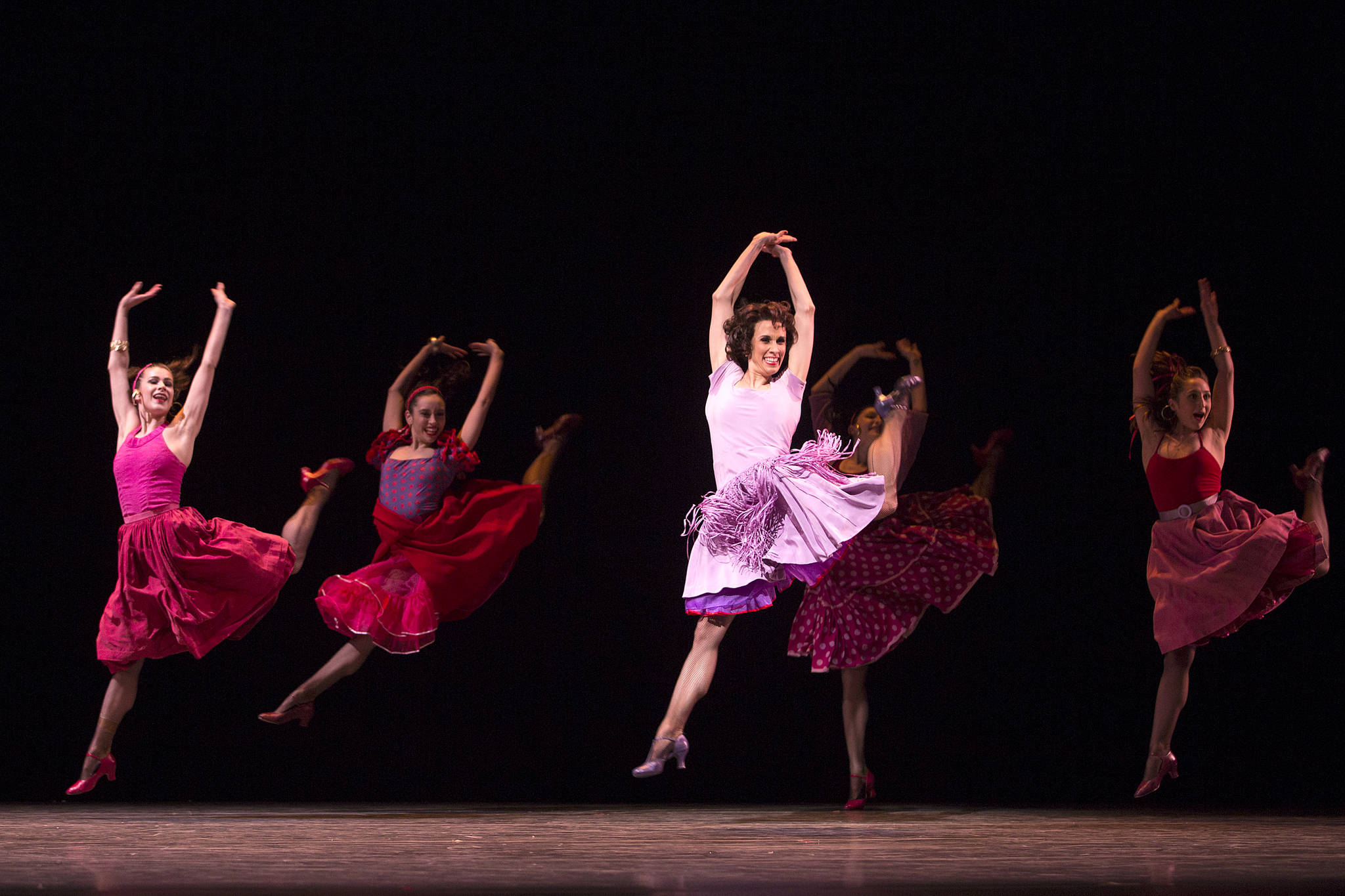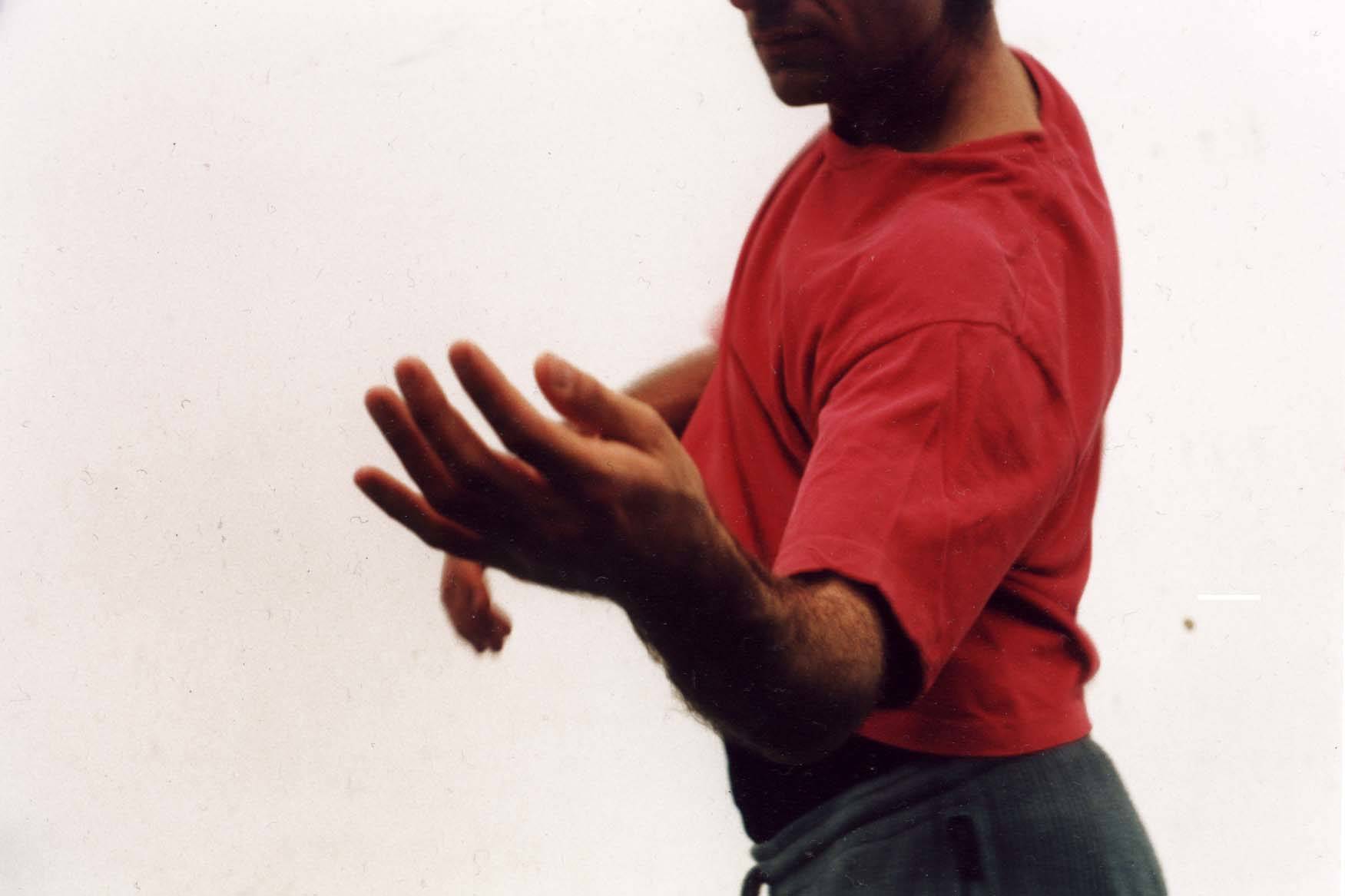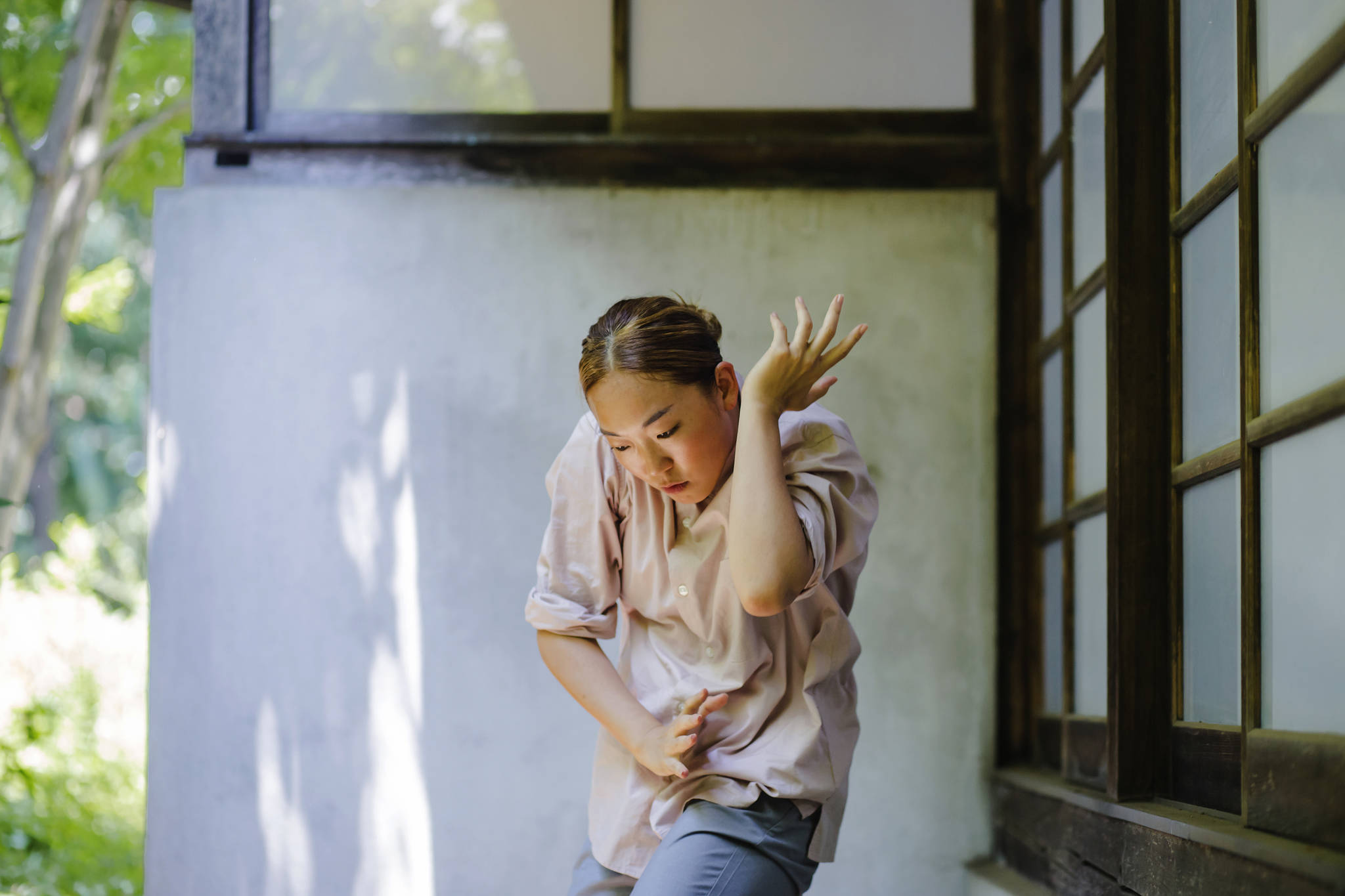A young couple meet and have their first embrace. A dowager takes the best seat at a recital. A man leans down to touch the ground, then turns walking into dancing. Over and over again, during a significant chunk of the 20th century, choreographer Jerome Robbins showed us ourselves: in love, in play, in our dreams and our nightmares. He was an expert observer of human behavior, and reflected those salient moments back to us in dances that distilled those activities into fundamental physical truths. We don’t just watch one of his ballets, we get caught up in the same movement impulses as the performers—our response is kinesthetic, not just visual.
Robbins, who died in 1998, would have been 100 this year. Pacific Northwest Ballet is joining the dance world in celebrating the artist’s contributions to the art form by opening its 2018–19 season with a Jerome Robbins Festival.
Robbins started his dance life during the heady beginnings of modern dance in the 1930s, and ended as a co-director of the New York City Ballet, one of the most highly regarded companies in the world. Between those landmarks was a life full of looking, catching humans off guard and bringing their world to the stage. PNB artistic director Peter Boal, who worked with Robbins when he danced for New York City Ballet, brings several of Robbins’ works together for this multi-event festival. “[Robbins] was a keen observer of things that others might not notice,” says Boal. “You are looking at people [he] may have passed on the sidewalk earlier.”
Like many men in dance, Robbins started training because his sister was taking classes. But while she went on to other pursuits, he was fascinated by the way that dancing could say something fundamental about a person or a situation. His early training in New York was a grab bag of styles from modern dance to musical theater, but when he started studying ballet he was hooked. Though he would shift fluidly between musical theater and concert dance throughout his career, he saw ballet as the biggest challenge, coming back to it again and again. And though he would make dances for American Ballet Theater, his own short-lived company (Ballets USA), Broadway shows, and films, he had some of his biggest success at New York City Ballet, working in the shadow of its iconic director, George Balanchine.
But while Balanchine was developing a neoclassical approach to ballet, Robbins’ choreography was more keyed to an expressive quality and human interaction. His early work Fancy Free was based on the hijinks of sailors he saw on shore leave. Afternoon of a Faun also came from direct observation, watching a young dancer napping one day in the studio. And The Concert, a series of vignettes set at a recital, features that dowager and her blustering husband among a vividly drawn cast of characters acting out their daydreams. His experiences in musical theater reinforced his desire for real emotion onstage, whether it was intensely dramatic or lighthearted fun.
Even when a work didn’t tell a story, he still wanted an emotional truth in performance. Dances at a Gathering, one of his most significant ballets, is more allusive than narrative. He made it in 1969 when he returned to NYCB after a long time away from the company, and it feels very much like a love letter to ballet and to the dancers who first performed it. It opens with that man touching the ground, and then continues for over an hour, with section after section of thrilling dancing to Chopin, a composer Robbins used many times.
He was, by most accounts, a difficult man to work for—technically exacting and emotionally demanding. And he was controversial. As a closeted gay man in the 1950s, he was pressured to “name names” before the House Un-American Activities Committee. He could be generous—he donated his profits from the stage and film versions of Fiddler on the Roof to the New York Public Library Performing Arts Collection—but he could also be a tyrant. After helping to create the groundbreaking Broadway production of West Side Story, he was fired from the film project after asking for multiple retakes.
PNB’s Jerome Robbins Festival will be a great introduction to his work if you don’t already know it, and, for those who are already fans, a wonderful chance to revisit a powerful repertory. Over the next two weeks, two distinct programs present seven works by the choreographer (the fest also includes separate panel discussions and studio demonstrations). Some dances are familiar to PNB audiences, including Afternoon of a Faun and West Side Story Suite, a concert version of the iconic Broadway/Hollywood hit. Alongside these ballets, we have a chance to examine Robbins’ ongoing fascination with Chopin. His music was already an integral part of classical ballet when Robbins first started dancing; Russian choreographer Mikhail Fokine had used it for Les Sylphides, a staple of the touring repertory and a ballet Robbins knew very well. In The Concert, Robbins plays with that familiarity as his characters gather to hear a piano recital. But later, starting with Dances at a Gathering, the choreographer dives in again, using the composer to illuminate human relationships beyond period stereotypes. In the Night is a set of three duets, each couple at a different point in their personal stories, while Other Dances (new to PNB) was created for a specific pair of performers: Natalia Makarova and Mikhail Baryshnikov. Those two Russian emigres brought their own heritage and relationship to the composer’s work to Robbins’ folk-inflected duet.
Most people don’t live to see their 100th birthday, but we can be grateful that Robbins left us some fabulous birthday presents.
Pacific Northwest Ballet’s Jerome Robbins Festival
Program A: 6:30 p.m. Fri., Sept. 21; 2 p.m. Sat., Sept. 22; 7:30 p.m. Sat., Sept. 29. $37–$189.
Program B: 7:30 p.m. Sept. 22, 27, & 28; 1 p.m. Sat., Sept. 29. $37–$189.
~Additional Events~
Jerome Robbins: Something to Dance About Screening: 7 p.m. Tues., Sept. 18, PNB subscribers only.
Working With Jerry (Panel Discussion): 7 p.m. Wed., Sept. 19, $25.
Jerome Robbins Festival Dress Rehearsal & PNB Conversations: 5:30 p.m. Thurs., Sept. 20, $30.
PNB First Look: 5 p.m. Fri., Sept. 21, $400–$7,500.
Ballet Talk With Doug Fullington: 5:30 p.m. Fri., Sept. 21, free.
Jerome Robbins’ Male Solos: 4:30 p.m. Tues., Sept. 25, Studio C, $25.
McCaw Hall, pnb.org









